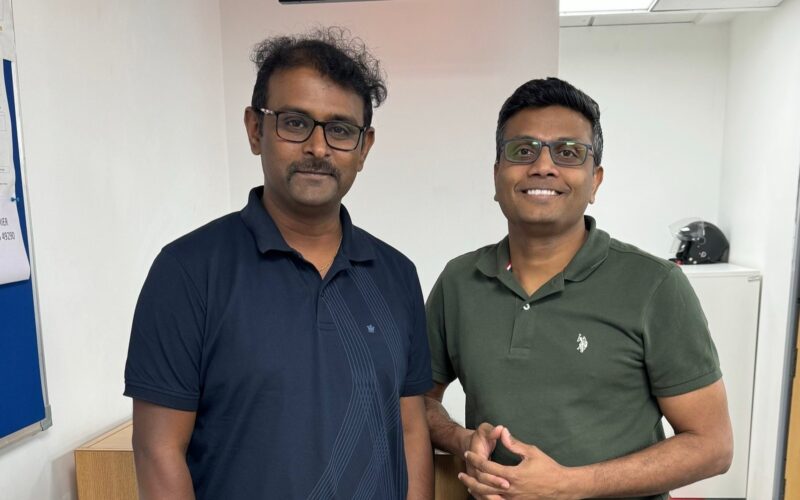//php echo do_shortcode(‘[responsivevoice_button voice=”US English Male” buttontext=”Listen to Post”]’) ?>
India is known for its semiconductor design expertise, which has been successfully nurtured since the 1980s. However, manufacturing capability and capacity has been limited despite having built a fab as far back as 1983 in the form of Semiconductor Complex Limited (SCL), established by M.J. Zarabi, considered one of the pioneers of the current chip industry in India.
The geopolitics of recent years have changed that inertia in developing the manufacturing ecosystem, and now there are several active efforts to build that capacity and resilience in the electronics and system design, and manufacturing value chain in India. Over the last year, the government has been busily courting local and global players to catalyze this local capability.
As a result, Micron Technology announced big investments in India last year for a chip assembly and test plant in India—along with state and government support, it is reported this could amount to a total investment of $2.75 billion. Earlier this year, the Indian government approved the establishment of three semiconductor units under the Development of Semiconductors and Display Manufacturing Ecosystems in India plan: a fab Tata Electronics in the state of Gujarat in partnership with Taiwan’s PSMC; another Tata outsourced semiconductor assembly and test (OSAT) facility in the state of Assam in north east India; and an assembly, test and packaging facility by CG Power in partnership with Renesas Electronics Corporation.
As the country went to the polls for its general election, EE Times took the opportunity to talk to executives across the whole value chain from design to manufacturing to understand both the ambition, as well as the reality and path to building out the manufacturing ecosystem in India.
What was clear from our conversations was that while India excels in creating the chip designs for the rest of the world, there is little that is created as IP for products designed in India specifically for the Indian market. Many talked about the ambition to do that. Some felt there was not a mindset in India to build a fabless company that could scale on the back of creating chip designs manufactured in India for global markets.
Many companies still provide outsourced design services and are succeeding well at that—all while still have massive growth plans (one company told me it had agreements for some $1.3 billion worth of orders for designing chips for leading global customers). Another company, SmartSoC Solutions, told me they had grown “silently” since being established in 2016 to develop a customer base of over 45 companies, including key players like AMD, Google and Samsung.
But there are some success stories for home-grown Indian consumer products manufacturers. BoAt Lifestyle is one such company, which has grown to become the world’s number two (by volume) manufacturer of true wireless earbuds, and India’s number one audio and wearables brand. The company’s co-founder and CEO spoke to us about the challenges of producing consumer electronics products for the Indian market, from the end-user requirements and sourcing chips, to their path to doing more of the manufacturing in India.
When it comes to manufacturing, while various fabs and OSATs were being commissioned, the biggest gap in the industry is talent to staff those facilities. This is why Kaynes Semicon has partnered with training and recruitment experts to develop centers of excellence and bring apprentices out of universities into finishing schools.
To get a snapshot of the entire value chain, from design and manufacturing (plus the training and skills needs), we recorded a series of video interviews with some key players in the Indian market, which you can watch below.
Sameer Mehta: Developing and Growing an Audio and Wearables Brand
“We wanted to make products suited to the Indian audience and aesthetically better than what was available, and more aspirational,” Mehta said. He highlights some of the challenges at the beginning: for example, getting first-party support from chip manufacturers, which meant having to work with ODM partners in China. In 2020, the company started its own R&D lab.
“It was a tough journey, but now we have scale, the chip manufacturers now support us. We were initially making 100% in China. The ecosystems didn’t exist in India. But in the last 2-3 years, government incentives have helped,” he added.
Mehta said the company now manufactures 70% of its devices in India now. He talks about enabling product differentiation using custom software over a low-cost chip, allowing them to give the same experience as any other brand in the world.
Raghu Panicker, Kaynes Semicon: An OSAT Targeting HPC and Beyond
He talks about Kaynes’ investment in the next wave of growth—HPC, for data centers in India, and becoming an AI enabled OSAT.
He also talks about the contract that Kaynes has just won from the government-owned Centre for Development of Advanced Computing (CDAC) to supply 3,000 RUDRA high-performance computing (HPC) servers. These were designed by CDAC and manufactured by Kaynes, to be used for building the PARAM RUDRA supercomputing systems under the country’s national supercomputing mission.
Hitesh Garg, NXP Semiconductors: The Indian Design and Startup Ecosystem
Satya Gupta: Changing the Way Electronics and VLSI Design is Taught
Bhanupriya Krishna: Developing the Skills Base for Semiconductor Manufacturing
Rohin Y: Developing Optoelectronic Processors for Data centers and Near-Edge Compute
Pradeep Vajram: The Semiconductor Investor Perspective
Source link
lol



